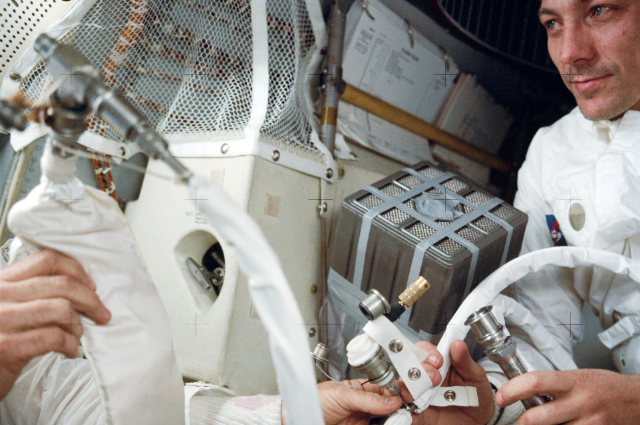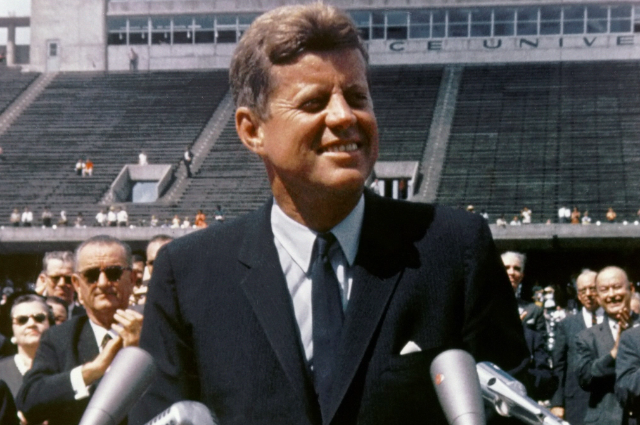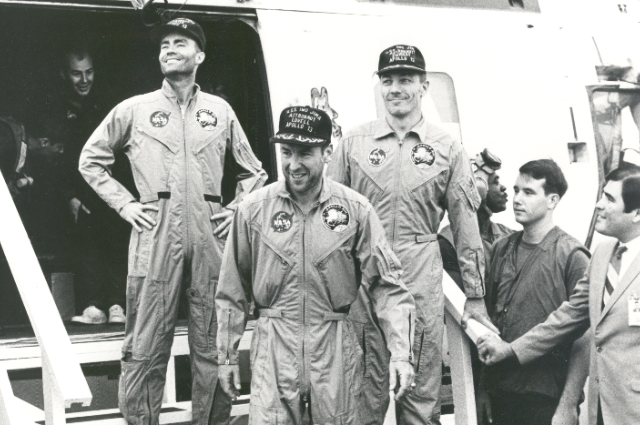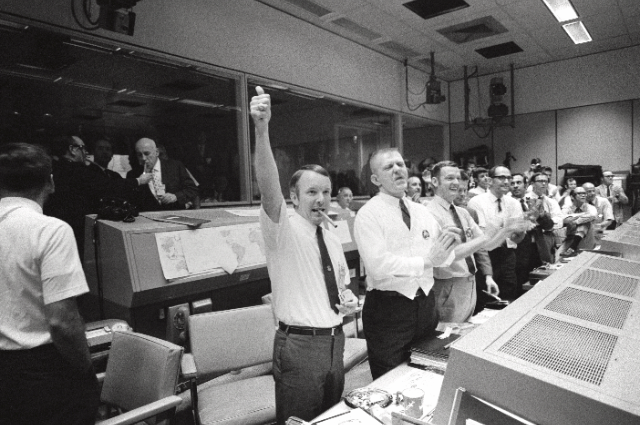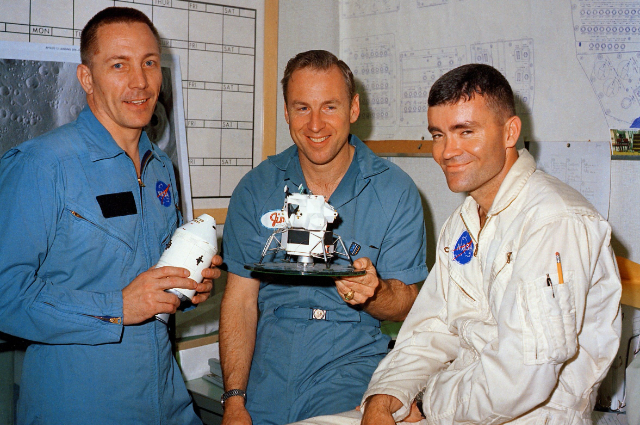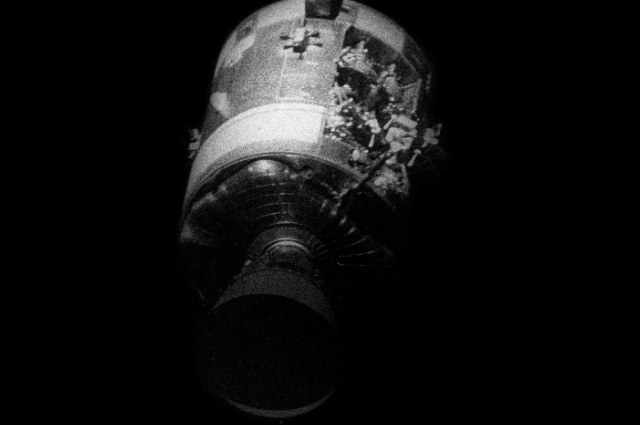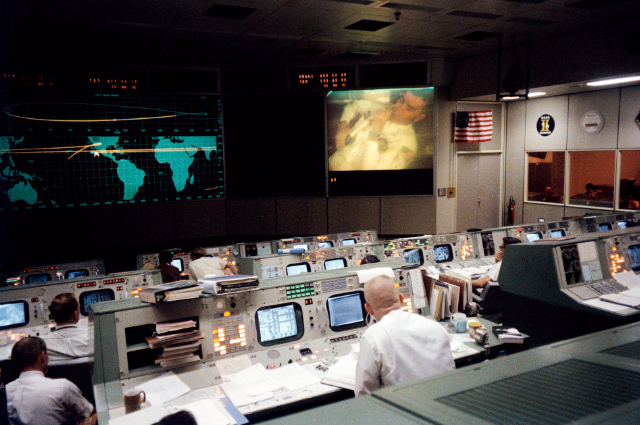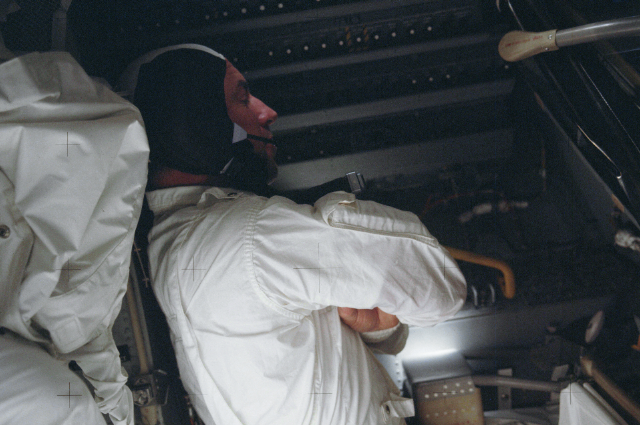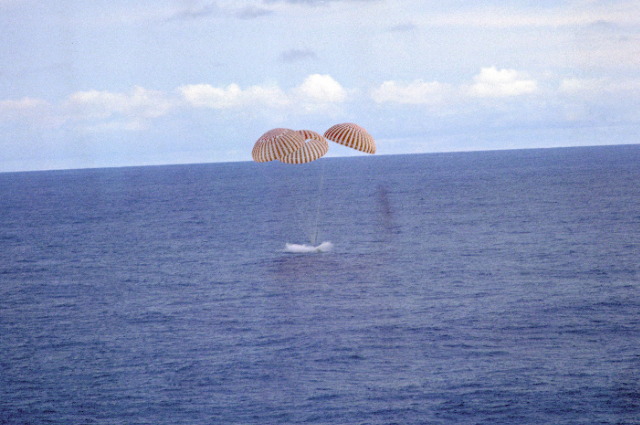Introduction
“Houston, we’ve had a problem.”
These words, spoken by astronaut Jack Swigert, marked the beginning of one of the most dramatic episodes in space exploration history. The Apollo 13 mission, initially aimed at landing on the moon, quickly turned into a desperate fight for survival when an oxygen tank exploded, crippling the spacecraft. This article delves into the harrowing journey of Apollo 13, exploring the critical moments, innovative problem-solving, and indomitable human spirit that ensured the crew's safe return to Earth. The mission's significance extends beyond its immediate crisis, highlighting the perilous nature of space travel and the relentless pursuit of knowledge that defines NASA's legacy. Through this exploration, we will uncover the profound impact of Apollo 13 on future space missions and its enduring legacy in the annals of human space exploration.
Historical Context of Apollo 13
President Kennedy’s Moon Promise
In 1961, President John F. Kennedy stood before a joint session of Congress and delivered a speech that would set the course for one of humanity's most remarkable achievements. On May 25, 1961, JFK famously declared, "I believe that this nation should commit itself to achieving the goal, before this decade is out, of landing a man on the Moon and returning him safely to the Earth." This ambitious vision was not merely a scientific endeavor; it was a strategic move in the geopolitical chess game of the Cold War.
Kennedy's call to action was driven by the necessity to assert American technological and ideological superiority over the Soviet Union, which had taken an early lead in the space race by launching Sputnik, the world's first artificial satellite, in 1957, and by sending Yuri Gagarin, the first human, into space in 1961. The Moon landing goal was a bold statement of intent, designed to rally public support, inspire national pride, and demonstrate the United States' technological prowess.
Cold War Space Race
The space race between the USA and USSR was a pivotal aspect of the Cold War, symbolizing the ideological and technological struggle between the capitalist West and the communist East. The Soviet Union’s early successes in space significantly influenced the USA's approach to space exploration. The launch of Sputnik and the subsequent achievements of Soviet cosmonauts were perceived as direct challenges to American technological capabilities and national security.
In response, the United States established NASA (the National Aeronautics and Space Administration) in 1958, prioritizing space exploration as a national goal. The Apollo program, initiated in 1961, was at the heart of this effort. It was not just a series of missions but a demonstration of American ingenuity, resilience, and determination to lead in space exploration.
The Cold War had a profound impact on NASA's goals and funding. The urgency to outpace the Soviet Union meant that significant resources were allocated to NASA, leading to rapid advancements in technology and human spaceflight capabilities. The space race catalyzed innovations that extended beyond space exploration, influencing various technological sectors.
Previous Apollo Missions
The Apollo program's initial missions were designed to test the spacecraft and equipment needed for a Moon landing. Apollo 7 and Apollo 9 tested the command and lunar modules in Earth orbit, while Apollo 8 and Apollo 10 conducted successful lunar orbital missions, paving the way for the historic Apollo 11 mission.
On July 20, 1969, Apollo 11 achieved Kennedy's goal when astronauts Neil Armstrong and Buzz Aldrin became the first humans to walk on the Moon, with Michael Collins orbiting above in the command module. Armstrong's words, "That's one small step for man, one giant leap for mankind," echoed around the world, marking a monumental achievement in human history. The mission was a resounding success, capturing the imagination of millions and solidifying the United States' leadership in space exploration.
Following Apollo 11, Apollo 12 continued to build on this success. Launched on November 14, 1969, Apollo 12 demonstrated the reliability of NASA’s technology and the feasibility of conducting precise lunar landings. Astronauts Charles Conrad and Alan Bean explored the lunar surface, collecting samples and conducting experiments, while Richard Gordon remained in lunar orbit. The mission further validated the goals of the Apollo program and showcased NASA’s growing expertise in manned space missions.
Public Enthusiasm for Space Missions Post-Apollo 11
The success of Apollo 11 generated immense public enthusiasm and interest in space exploration. The mission had not only achieved a significant scientific milestone but also served as a unifying event that transcended national borders. People around the world were captivated by the images and stories of astronauts walking on the Moon, and the mission became a symbol of human potential and achievement.
However, the intense public excitement that followed Apollo 11 began to wane as the novelty of lunar exploration diminished. The subsequent missions, while scientifically valuable and technologically impressive, did not capture the same level of widespread attention. The public and political focus began to shift, and questions arose about the costs and benefits of continuing the Apollo program.
As the United States grappled with economic challenges and shifting priorities in the early 1970s, NASA faced increasing scrutiny and budget constraints. The cost of maintaining an ambitious space program was substantial, and with the primary goal of landing on the Moon already achieved, the justification for continued high levels of funding became more difficult.
Impact on Apollo 13
The Apollo 13 mission, scheduled for launch in April 1970, was affected by this changing landscape. While the mission aimed to continue the exploration of the Moon, specifically the Fra Mauro formation, it did so under the shadow of reduced public interest and budgetary pressures. The crew of Apollo 13, consisting of Commander James A. Lovell, Command Module Pilot John L. Swigert, and Lunar Module Pilot Fred W. Haise, were prepared for a challenging yet scientifically rewarding mission.
Apollo 13's journey began on a promising note, with a successful launch on April 11, 1970. However, just two days into the mission, disaster struck when an oxygen tank in the service module exploded, crippling the spacecraft and transforming a routine mission into a dramatic struggle for survival. The explosion forced the crew to abort their planned lunar landing and focus entirely on returning safely to Earth.
Despite the crisis, the response to Apollo 13 showcased the resilience and ingenuity of both the astronauts and NASA’s ground control teams. The mission became a testament to human perseverance and the ability to overcome seemingly insurmountable challenges. While Apollo 13 did not achieve its initial goal of lunar exploration, it highlighted the inherent risks of space travel and underscored the importance of careful planning, quick thinking, and teamwork in the face of adversity.
The Apollo 13 mission ultimately reinforced the significance of space exploration and the value of NASA’s efforts. It reminded the world of the complexities and dangers associated with venturing into space and served as a powerful narrative of survival and success against the odds. The lessons learned from Apollo 13 contributed to the safety and success of subsequent missions, ensuring that the spirit of exploration and discovery continued to thrive.
Public Interest and Funding Challenges
Decline in Excitement
The Apollo 11 mission in July 1969 was a landmark achievement that captured the imagination of millions around the world. Neil Armstrong’s historic first steps on the lunar surface were broadcast live on television, and the phrase “That’s one small step for man, one giant leap for mankind” became an iconic symbol of human achievement. The successful moon landing was not just a scientific triumph but also a cultural milestone that marked a significant moment in the Cold War-era space race between the United States and the Soviet Union.
However, the initial excitement and public enthusiasm that accompanied Apollo 11 began to wane relatively quickly. Once the goal of landing a man on the moon had been achieved, many people, including policymakers and the general public, started to question the need for continued manned lunar missions. The novelty of moon landings began to wear off, and the public's attention shifted to other issues and events. Subsequent missions, such as Apollo 12, received significantly less media coverage and public interest.
Several factors contributed to this decline in excitement. The extraordinary achievement of Apollo 11 set a high bar, making it difficult for subsequent missions to capture the same level of public fascination. Additionally, the inherent risks and costs associated with space exploration began to weigh more heavily in the public consciousness, especially as domestic issues such as the Vietnam War and economic challenges demanded attention and resources.
Budget Cuts
As public interest in the Apollo program waned, so did political support for its funding. NASA's budget, which had peaked during the mid-1960s as the United States geared up to meet President Kennedy’s goal of landing a man on the moon, began to decline. By the early 1970s, the economic and political landscape had changed significantly. The country was facing economic challenges, including rising inflation and increased federal spending on social programs and the Vietnam War. In this context, continued high levels of funding for NASA became harder to justify.
Budget cuts had a direct impact on the Apollo program. Funding for space exploration was significantly reduced, leading to the cancellation of several planned missions. Apollo 20, originally slated for 1974, was one of the high-profile casualties. The reduction in funding not only curtailed the number of missions but also affected the scope and ambition of the missions that remained on the schedule. NASA had to make difficult decisions about resource allocation, prioritizing essential operations and safety measures over more ambitious scientific goals.
Cancellation of Planned Missions
The cancellation of Apollo 20, along with other planned missions, reflected the shifting priorities and constraints faced by NASA in the early 1970s. The decision to cancel these missions was influenced by several factors, including budgetary pressures, changing political priorities, and the diminishing returns perceived from additional lunar landings.
The cancellation of missions also had a psychological impact on the space agency and its workforce. NASA, which had been riding high on the successes of the Apollo program, had to adjust to a new reality where its ambitious goals were being scaled back. The focus shifted from expanding lunar exploration to ensuring the safety and success of the remaining missions within the constraints of a reduced budget.
Impact on Apollo 13
The Apollo 13 mission, launched in April 1970, was directly affected by the broader context of declining public interest and reduced funding. Although the mission was initially planned with the same level of ambition and scientific objectives as its predecessors, it operated under the shadow of budget cuts and changing priorities.
One of the most immediate impacts of the reduced funding was on the level of public and political support for the mission. Unlike Apollo 11, which had been a global event, Apollo 13 did not receive the same level of media coverage and public attention. This lower profile meant that the mission had to work harder to justify its costs and significance, even before the crisis unfolded.
The budget cuts also had practical implications for the mission’s resources and preparations. NASA had to operate more efficiently, making tough choices about where to allocate limited funds. These constraints could have influenced various aspects of mission planning and execution, from training and simulations to the availability of backup systems and contingency planning.
When the oxygen tank exploded two days into the mission, crippling the spacecraft and forcing the crew to abort their planned lunar landing, the Apollo 13 mission quickly transformed from a routine scientific expedition into a dramatic struggle for survival. The crisis highlighted the precarious nature of space exploration and the critical importance of thorough preparation and resourcefulness.
Despite the challenges posed by reduced funding and waning public interest, the response to the Apollo 13 crisis showcased the resilience and ingenuity of both the astronauts and NASA’s ground control teams. The successful return of the crew, achieved through innovative problem-solving and exemplary teamwork, became a testament to human perseverance and the enduring spirit of exploration.
The Apollo 13 mission ultimately reinforced the value of NASA’s work and the importance of continued investment in space exploration. The mission’s crisis and resolution captured the public’s imagination in a way that the initial moon landing had not, reminding people of the dangers and rewards of pushing the boundaries of human achievement. The lessons learned from Apollo 13 led to improved safety protocols and innovations that would benefit future missions.
The Apollo 13 Mission Objectives
Scientific Exploration
The Apollo 13 mission, like its predecessors, was designed with the primary objective of advancing human understanding of the moon's geology and history. The specific aim of Apollo 13 was to explore the Fra Mauro region, a site believed to hold significant clues about the moon’s past. The Fra Mauro formation, characterized by its hilly terrain and distinctive geological features, was thought to be composed of material ejected during the formation of the Imbrium Basin, one of the moon's largest and most prominent impact craters. By studying the Fra Mauro region, scientists hoped to gain insights into the processes that shaped the moon's surface and, by extension, the early history of the solar system.
Understanding the moon’s origin and composition was crucial for several reasons. First, it provided a comparative basis for studying the Earth, as the moon is thought to have formed from the same primordial material. Second, knowledge of lunar geology could offer clues about the early conditions and evolutionary processes of terrestrial planets. The data collected from lunar missions like Apollo 13 would contribute to developing theories about planetary formation and the history of the inner solar system.
Components of the Spacecraft
The Apollo 13 spacecraft was composed of four main components, each playing a critical role in the mission's objectives and safety:
1. Command Module (CM) - Odyssey:
The command module served as the living quarters for the astronauts and the control center for the mission. It was equipped with navigation and communication systems, life support, and re-entry capabilities. Named Odyssey, the CM was designed to house the crew during the journey to and from the moon and during re-entry into Earth’s atmosphere.
2. Service Module (SM):
The service module contained essential support systems such as the main propulsion engine, fuel tanks, oxygen and hydrogen tanks for electricity generation, and other critical life support systems. The SM was attached to the command module and was jettisoned just before re-entry into Earth’s atmosphere. It also housed the oxygen tanks, one of which exploded during the mission, leading to the crisis that Apollo 13 faced.
3. Lunar Module (LM) - Aquarius:
The lunar module, named Aquarius, was intended to transport two astronauts from lunar orbit to the moon's surface and back. The LM consisted of two stages: the descent stage, which contained the landing gear, fuel, and scientific equipment, and the ascent stage, which housed the crew compartment and the ascent engine to return to lunar orbit. Due to the explosion in the service module, the LM was repurposed as a lifeboat to support the crew during their perilous journey back to Earth.
4. Launch Escape System (LES):
The launch escape system was designed to protect the crew in the event of a launch emergency. It was a tower-like structure mounted atop the command module, equipped with solid rocket motors capable of rapidly pulling the CM away from the launch vehicle in case of a catastrophic failure during launch. The LES was jettisoned once the rocket reached a safe altitude.
Crew Composition
The Apollo 13 mission crew was composed of three experienced astronauts:
1. James A. Lovell (Commander):
Jim Lovell was a veteran astronaut with a wealth of spaceflight experience, including previous missions on Gemini 7, Gemini 12, and Apollo 8. As the commander of Apollo 13, Lovell brought leadership, experience, and calm under pressure to the mission.
2. John L. "Jack" Swigert (Command Module Pilot):
Jack Swigert joined the Apollo 13 crew as a last-minute replacement for Thomas K. Mattingly, who was grounded due to potential exposure to German measles. Swigert was an experienced test pilot and astronaut, having been selected as part of NASA’s fifth astronaut group in 1966. Despite the sudden change, Swigert's skills and professionalism were vital to the mission.
3. Fred W. Haise (Lunar Module Pilot):
Fred Haise, a former test pilot and aerospace engineer, was tasked with the lunar module pilot duties. Apollo 13 was his first spaceflight mission. Haise's expertise in handling the lunar module and his problem-solving abilities were critical during the mission's emergency phase.
Launch and Early Mission
The Apollo 13 mission was launched on April 11, 1970, from Kennedy Space Center. The launch sequence proceeded smoothly, and the spacecraft entered its planned trajectory towards the moon. The crew performed routine system checks and prepared for the scheduled lunar landing at the Fra Mauro crater, a site chosen for its potential to provide valuable geological samples.
The Fra Mauro crater was significant because it was believed to be a remnant of an ancient impact basin. Studying this area could reveal much about the moon's geological history and the broader processes that shaped the inner planets. The region’s unique geological features made it a prime target for exploration and scientific investigation.
During the early phase of the mission, the astronauts maintained their routine, including a moment of levity when they humorously remarked about forgetting to file their income tax returns. This light-hearted moment was a reminder of the human aspect of space exploration, where even the most seasoned astronauts could make mundane oversights.
However, the mission took a dramatic turn 56 hours after launch, when an oxygen tank in the service module exploded. The explosion damaged the spacecraft, leading to the infamous transmission from Jack Swigert: "Houston, we’ve had a problem." This incident marked the beginning of a life-threatening crisis, forcing the crew and mission control to work together to ensure the safe return of the astronauts.
In response to the explosion, the mission objectives shifted from lunar exploration to survival and safe return. The crew had to rely on the lunar module as a lifeboat, using its systems to sustain life and navigate back to Earth. The teamwork, ingenuity, and resilience displayed by the astronauts and NASA’s ground control during this crisis became a testament to human perseverance and problem-solving capabilities in the face of extreme adversity.
The successful resolution of the Apollo 13 crisis not only saved the lives of the astronauts but also provided valuable lessons for future space missions. The mission underscored the importance of thorough planning, robust system design, and the ability to adapt to unforeseen challenges. Despite not achieving its original scientific objectives, Apollo 13 remains one of the most celebrated missions in the history of space exploration, exemplifying the spirit of exploration and the pursuit of knowledge under the most challenging circumstances.
The Crisis: Oxygen Tank Explosion
Initial Incident
On April 13, 1970, two days into the Apollo 13 mission, the astronauts experienced an unexpected and life-threatening crisis. At approximately 55 hours and 54 minutes into the flight, the crew was performing routine maintenance operations, which included stirring the cryogenic oxygen tanks. This task, seemingly mundane, turned disastrous when a faulty wire insulation inside one of the oxygen tanks triggered a spark. The tank exploded, sending shockwaves through the spacecraft.
Commander Jim Lovell immediately noticed a problem when he saw a warning light indicating low pressure in one of the two oxygen tanks. Shortly afterward, the crew heard a loud bang and felt the spacecraft shudder. Fred Haise, the lunar module pilot, reported, “Houston, we’ve had a problem.” Jack Swigert, the command module pilot, reiterated the message to mission control, emphasizing the gravity of the situation.
The explosion not only depleted one of the crucial oxygen tanks but also damaged the second tank, causing it to vent rapidly into space. Oxygen was not only essential for the crew’s life support system but also served as a critical component in generating electricity through the spacecraft’s fuel cells. The sudden loss of oxygen supply meant that the spacecraft’s power levels were rapidly diminishing.
Immediate Impact on the Spacecraft and Crew
The immediate aftermath of the explosion was chaotic. The spacecraft’s systems began to malfunction, and alarms filled the command module. The crew saw their mission objectives shift from landing on the moon to merely surviving and returning to Earth. The explosion had not only caused a loss of oxygen but also led to the failure of two of the three fuel cells, which were essential for providing electrical power to the spacecraft.
The cabin atmosphere was also compromised, raising concerns about the crew’s ability to breathe. Without a steady supply of oxygen, the carbon dioxide levels inside the command module started to rise, posing a serious threat to the astronauts' health. Additionally, the navigation systems were disrupted, making it difficult to plot a course back to Earth.
Life-Threatening Situation
The explosion placed the Apollo 13 crew in a dire situation. The immediate tasks were to stabilize the spacecraft, assess the damage, and develop a plan to ensure the survival of the astronauts. The crew, along with NASA’s mission control, had to make quick and critical decisions to address several life-threatening issues:
1. Power Conservation:
With the loss of two fuel cells, conserving power became a top priority. The crew had to shut down non-essential systems and transfer critical functions to the lunar module, Aquarius, which was originally designed to support only two astronauts for a short period on the lunar surface. Now, it had to sustain three astronauts for the duration of their return trip to Earth.
2. Life Support:
Ensuring an adequate supply of oxygen and managing carbon dioxide levels were crucial. The lunar module had its own life support system, but it was not designed to handle the needs of three astronauts for an extended period. The crew and mission control had to devise ways to adapt the lunar module’s systems to support all three astronauts.
3. Navigation and Course Correction:
The explosion had knocked the spacecraft off course. The crew and mission control had to develop a strategy to use the lunar module’s descent engine to perform critical burns that would place them on a safe trajectory back to Earth. This required precise calculations and flawless execution under conditions of limited power and system functionality.
The Decision to Abort the Moon Landing
The realization that the mission could no longer proceed as planned came swiftly. The damage to the service module and the loss of critical resources made it clear that landing on the moon was no longer feasible. The primary focus shifted to ensuring the safe return of the crew.
Mission control in Houston, led by Flight Director Gene Kranz, immediately began working on contingency plans. The decision was made to use the lunar module as a “lifeboat” to provide life support and propulsion for the return journey. This approach required shutting down the command module to conserve its remaining power for re-entry into Earth’s atmosphere.
The crew executed a series of complex maneuvers, using the lunar module’s descent engine to perform a crucial burn that would place them on a free-return trajectory around the moon. This trajectory would allow the spacecraft to use the moon’s gravity to slingshot back towards Earth, minimizing the need for additional propulsion and conserving precious resources.
In summary, the oxygen tank explosion aboard Apollo 13 was a critical incident that transformed the mission from a lunar landing to a desperate struggle for survival. The crew and NASA’s mission control had to address immediate life-threatening issues, including power conservation, life support management, and navigation, ultimately leading to the decision to abort the moon landing and focus on returning the astronauts safely to Earth.
Decision-Making Under Pressure
Immediate Actions
When the oxygen tank exploded on Apollo 13, the crew and NASA faced a critical and unprecedented situation. The immediate priority was to stabilize the spacecraft and ensure the safety of the astronauts. Within moments of the explosion, the crew reported the problem to mission control in Houston. The ground team, led by Flight Director Gene Kranz, began assessing the situation and devising a plan to address the multiple issues caused by the explosion.
The first step was to determine the extent of the damage. The crew relayed data back to mission control, highlighting the loss of oxygen and power. It became clear that the command module’s service module had been severely compromised, with two of the three fuel cells out of commission and the oxygen tanks venting into space. The command module, Odyssey, could no longer sustain the crew for the remainder of the mission.
To stabilize the situation, the decision was made to power down the command module to conserve its remaining resources for the re-entry phase of the mission. The focus then shifted to utilizing the lunar module, Aquarius, as a lifeboat. The lunar module, designed to support two astronauts for a brief period on the lunar surface, now had to accommodate three astronauts for the journey back to Earth.
Switching to the Lunar Module as a Lifeboat
The transition to the lunar module involved a series of critical steps. The crew had to activate the lunar module’s systems, which were initially in standby mode. The lunar module provided life support, propulsion, and navigation capabilities, which were essential for the survival of the crew and their safe return.
Activating the lunar module’s environmental control system was crucial for providing oxygen and removing carbon dioxide. The crew also had to transfer navigation data and align the lunar module’s guidance system to ensure accurate course corrections. This was a delicate operation, requiring precise execution to avoid further complications.
The crew and mission control collaborated closely, with the astronauts executing commands sent from the ground. The use of the lunar module’s descent engine for course corrections was a critical maneuver. This engine was designed for controlled landings on the moon, but it now had to be used for mid-course corrections and to place the spacecraft on a trajectory that would bring them back to Earth safely.
Resource Management
One of the most challenging aspects of the Apollo 13 crisis was managing the limited resources available in the lunar module. The lunar module was equipped with enough consumables—oxygen, water, and power—for a short lunar mission, not for an extended journey back to Earth with an additional crew member. Careful rationing and innovative problem-solving were required to ensure the crew’s survival.
1. Power Conservation:
The lunar module’s power supply was limited, necessitating stringent power conservation measures. The crew had to shut down non-essential systems and limit the use of electrical equipment. This meant operating in a cold, dimly lit environment to stretch the available power until re-entry.
2. Oxygen and Carbon Dioxide Management:
While the lunar module provided oxygen for breathing, the buildup of carbon dioxide posed a significant risk. The lunar module’s scrubbers were not designed to handle the carbon dioxide output of three astronauts for an extended period. To address this, engineers on the ground devised an improvised solution using materials available on the spacecraft—plastic bags, cardboard, and duct tape—to adapt the command module’s square carbon dioxide scrubbers to the lunar module’s round openings. This “mailbox” fix was a critical innovation that allowed the crew to breathe safely.
3. Water Rationing:
Water was required not only for drinking but also for cooling the spacecraft’s systems. With limited water supplies, the crew had to ration their intake, consuming minimal amounts to avoid dehydration while maintaining the functionality of the spacecraft’s cooling systems.
Throughout the crisis, communication between the crew and mission control was vital. The astronauts reported their status regularly, and mission control provided guidance on managing resources and executing necessary maneuvers. The teamwork and trust between the astronauts and the ground team were instrumental in navigating the crisis.
Ensuring Safety and Survival
As the crew worked to manage their resources and stabilize their situation, the ground team focused on ensuring their safe return. The mission was now a race against time to bring the astronauts back to Earth before their resources ran out. Precise navigation and course corrections were essential to ensure a safe re-entry trajectory.
The lunar module’s descent engine was fired multiple times to adjust the spacecraft’s course. These maneuvers had to be executed with precision to ensure that the spacecraft would enter Earth’s atmosphere at the correct angle. Too steep an entry could result in burning up in the atmosphere, while too shallow an entry could cause the spacecraft to skip off the atmosphere and be lost in space.
As the spacecraft approached Earth, the crew transferred back to the command module, which had been powered down to conserve its remaining resources. The command module’s heat shield and re-entry systems were activated for the final phase of the mission. On April 17, 1970, Apollo 13 safely splashed down in the Pacific Ocean, a testament to the skill, ingenuity, and resilience of the astronauts and the NASA team.
The Journey Back to Earth
Navigational Challenges
After the explosion of the oxygen tank, the primary goal for the Apollo 13 mission shifted from landing on the moon to bringing the astronauts back safely to Earth. One of the most daunting tasks was navigating the spacecraft with limited power and damaged systems. The explosion had knocked the Apollo 13 off its intended trajectory, necessitating precise and critical course corrections to ensure a safe return.
Without the use of the command module’s primary navigation systems, the crew had to rely on manual calculations and the lunar module’s more rudimentary guidance systems. The lunar module, designed for short trips from lunar orbit to the moon’s surface, now had to serve as the main navigation hub for a complex journey around the moon and back to Earth.
Mission control in Houston played a crucial role in assisting the astronauts. The ground team worked tirelessly to provide updated navigational data and develop a step-by-step plan for the necessary burns to correct the spacecraft’s course. These burns, executed using the lunar module’s descent engine, required exact timing and alignment to be effective.
Critical Burns and Course Corrections
The first critical maneuver was the “free return trajectory” burn, which would use the moon’s gravity to slingshot the spacecraft back towards Earth. This burn was performed using the lunar module’s descent engine and had to be executed with high precision. The engine burn needed to be of a specific duration and thrust to ensure that Apollo 13 would loop around the moon and head back to Earth on a safe trajectory.
The lunar module’s descent engine, originally intended for controlled lunar landings, now had to operate under conditions it was not designed for. The astronauts had to align the spacecraft using the Earth and moon as reference points, a task complicated by the limited power and life support systems. Despite these challenges, the crew successfully performed the burn, setting Apollo 13 on a return path.
As the spacecraft swung around the moon, another crucial burn was needed to refine the trajectory and ensure that Apollo 13 would re-enter Earth’s atmosphere at the correct angle. This burn, known as the “PC+2” burn, was executed two hours after the closest approach to the moon. The timing and accuracy of this burn were vital; an incorrect angle of re-entry could lead to the spacecraft either burning up in the atmosphere or skipping off into space.
The execution of these burns required teamwork and trust between the astronauts and mission control. The astronauts meticulously followed the instructions provided by the ground team, making manual adjustments to the spacecraft’s orientation and monitoring the descent engine’s performance. Despite the high stakes and the stress of their situation, the crew remained focused and precise, successfully completing the necessary maneuvers.
Safe Return and Aftermath
Splashdown
With the critical burns completed, the focus shifted to preparing for re-entry and splashdown. The command module, Odyssey, which had been powered down to conserve resources, needed to be reactivated. The astronauts transferred back from the lunar module to the command module, powering up its systems and preparing for the final phase of their journey.
Re-entry into Earth’s atmosphere is always a perilous phase of space missions. The spacecraft needed to enter at a precise angle to avoid disintegration from atmospheric friction or bouncing off into space. As the command module approached Earth, the service module was jettisoned, revealing the extent of the damage from the explosion.
On April 17, 1970, the command module re-entered the Earth’s atmosphere. The heat shield withstood the intense friction and heat, protecting the astronauts inside. As planned, parachutes deployed to slow the descent, and the command module splashed down safely in the Pacific Ocean. The splashdown occurred near Samoa, where recovery teams from the USS Iwo Jima were waiting to retrieve the crew.
Reception and Immediate Reactions
The successful splashdown of Apollo 13 was met with immense relief and joy around the world. The mission, which had been fraught with danger and uncertainty, ended in triumph with the safe return of astronauts Jim Lovell, Jack Swigert, and Fred Haise. The global reaction was one of celebration and admiration for the astronauts and the NASA team who had worked tirelessly to ensure their safety.
In the hours and days following the splashdown, the astronauts underwent medical checks and debriefings to assess their health and gather information about the mission. Despite the harrowing experience, the crew was in good health and spirits. They were celebrated as heroes, and their safe return was seen as a testament to human ingenuity, perseverance, and the power of teamwork.
The Apollo 13 mission also had a profound impact on NASA and space exploration. The crisis highlighted the need for improved safety protocols and better contingency planning for future missions. The lessons learned from Apollo 13 were incorporated into subsequent missions, ensuring that astronauts would be better prepared to handle emergencies in space.
The story of Apollo 13 has since become an enduring symbol of resilience and problem-solving under pressure. It has been immortalized in books, documentaries, and the 1995 film “Apollo 13,” which brought the story to a new generation and underscored the remarkable achievements of the mission’s crew and support teams.
In conclusion, the journey back to Earth for Apollo 13 was a testament to the bravery and skill of the astronauts and the dedication of the NASA team. Through precise navigation, critical course corrections, and effective resource management, they turned a potential tragedy into a successful mission, leaving a legacy of innovation and resilience in the face of adversity.
. . .
References:
- Lovell, J., & Kluger, J. (1994). Lost Moon: The Perilous Voyage of Apollo 13. Houghton Mifflin.
- NASA History Division. (2007). Apollo 13: “Houston, We've Got a Problem”. NASA.
- Kranz, G. (2000). Failure Is Not an Option: Mission Control from Mercury to Apollo 13 and Beyond. Simon & Schuster.
- Murray, C., & Cox, C.B. (1989). Apollo: The Race to the Moon. Simon & Schuster.
- Slayton, D., & Cassutt, M. (1994). Deke!: U.S. Manned Space from Mercury to the Shuttle. Forge.
- Chaikin, A. (1994). A Man on the Moon: The Voyages of the Apollo Astronauts. Viking.
- Woods, D., & O'Brien, W. (2008). Apollo 13: The NASA Mission Reports. Apogee Books.
- Hansen, J.R. (2005). First Man: The Life of Neil A. Armstrong. Simon & Schuster.
- Cunningham, W. (1977). The All-American Boys. Macmillan.
- Harland, D.M. (1999). Exploring the Moon: The Apollo Expeditions. Springer-Praxis.
- Cortright, E.M. (1975). Apollo Expeditions to the Moon. NASA.
- Shayler, D.J. (2002). Apollo: The Lost and Forgotten Missions. Springer-Praxis.
- Burgess, C., & Dubbs, C. (2007). Animals in Space: From Research Rockets to the Space Shuttle. Springer-Praxis.
- Plait, P. (2002). Bad Astronomy: Misconceptions and Misuses Revealed, from Astrology to the Moon Landing “Hoax”. Wiley.
- Smithsonian National Air and Space Museum. (2020). Apollo 13: The Real Story. Smithsonian Institution.

